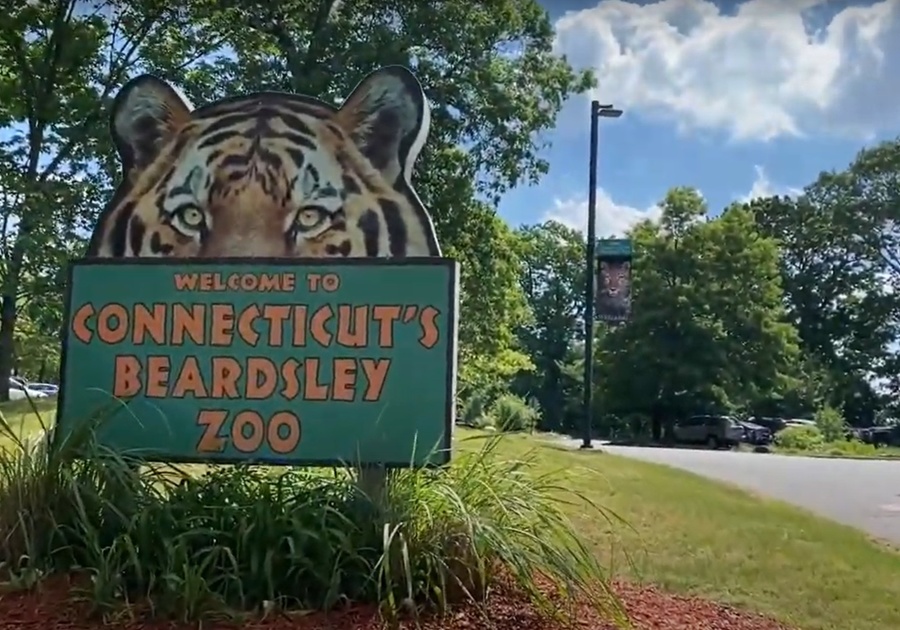Connecticut’s Beardsley Zoo is pleased to announce the official groundbreaking of a spacious new habitat for Andean bears (Tremarctos ornatus), welcoming back a species that last was part of the Zoo’s animal collection in 2011. The bears will join the Zoo when construction on the habitat is complete, slated for spring 2022.
Andean bears are part of the Association of Zoos and Aquariums (AZA) Saving Animals From Extinction (SAFE) program, which focuses the collective expertise of AZA-accredited zoos and aquariums on endangered species recovery. Native to the Andes and outlying mountain ranges, the bears’ conservation status is listed as vulnerable, with a decreasing population in the wild.
Connecticut’s Beardsley Zoo board members, Zoo staff, representatives from Diversity Construction Group (DCG) and dignitaries will gather for a groundbreaking event for the Zoo’s newest habitat on Thursday, July 29 at 11 a.m.
“Connecticut’s Beardsley Zoo continues to grow, allowing us to expand on our mission of animal conservation and education. We’re pleased to welcome Andean bears back to the Zoo as another chapter in the story of diversity and richness of life in South America,” said Gregg Dancho, zoo director. “Our heartfelt thanks to the state of Connecticut for helping to fund our newest habitat,” Dancho added. “Thank you also to our dedicated staff, Board of Directors, and volunteers.”
The new Andean bear habitat will be substantially larger than the bear habitat from a decade ago. The bears required a larger enclosure, and the Zoo chose then to relocate them to a more appropriate facility. The new Andean bear habitat will feature a landscaped outdoor yard with multiple opportunities for climbing and engaging in social behaviors. The work is being done by Diversity Construction Group LLC.
Naming opportunities for major donors are still available. Interested parties can contact Jessica Summers at jsummers@beardsleyzoo.org or call 203-394-6573.
About Andean bears
Also called Spectacled bears for the whitish or cream “spectacles” that circle these bears eyes, each individual has a unique set of markings. Every spectacled bear has its own “fingerprint” of distinct cream or whitish markings on its head, throat, and chest. The markings also give the bear its scientific name: Tremarctos ornatus, or decorated bear. The bears grow to 5-6 feet long and stand 2-3 feet high at the shoulder. Males can weight up to 340 pounds. Females grow to about 180 pounds. The Spectacled Bear is one of the most endangered bear species in the world, the most endangered being the Giant Panda Bear, which is their closest living relative today. Females are called ‘Cows’, males are called ‘Boars’ and the young are called ‘Cubs’.
About Connecticut’s Beardsley Zoo
Let your curiosity run wild! Connecticut’s only zoo, celebrating its 99th year, features 350 animals representing primarily North and South American and Northern Asian species. Guests won’t want to miss our Amur tigers and leopards, maned wolves, Mexican gray wolves, and red wolves. Other highlights include the Spider Monkey Habitat, the Rainforest Building, the prairie dog exhibit, and the Pampas Plain with Giant anteaters and Chacoan peccaries. Guests can ride on the carousel, grab a bite from the Peacock Café and eat in the Picnic Grove. Connecticut’s Beardsley Zoo is a non-profit organization approaching its 100th year at a time when the mission of helping fragile wildlife populations and eco-systems is more important than ever.
Tickets must be purchased on the Zoo’s website at beardsleyzoo.org; guests taking advantage of the free program for Connecticut children must also make reservations online. In accordance with the state of Connecticut COVID-19 guidelines: we recommend that guests continue to wear masks while visiting the Zoo, but when guests are outside and can maintain social distance, masks may be removed. In any indoor area, or when social distancing cannot be maintained, masks are required. Everyone over the age of two, except for those with medical conditions that precludes wearing them, should have a mask available.



